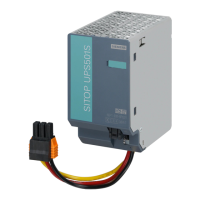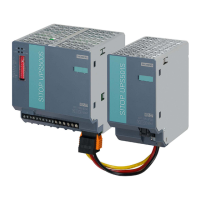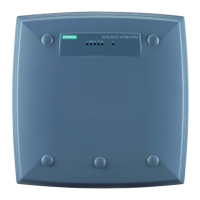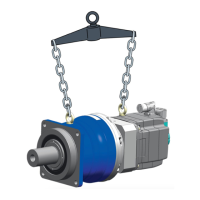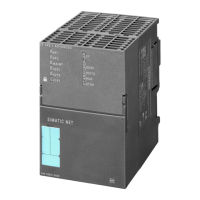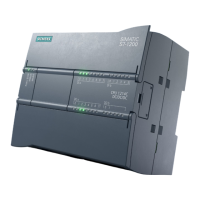absorption in the analyzer chamber). This signal is used as the reference signal for zero point
calibration. The signal U
0
also serves as the initial value for calculating the full-scale value.
As the concentration of the measured component increases, so too does absorption in the
analyzer chamber. As a result of this preabsorption, the detectable radiation energy in the
detector decreases, and thus also the signal voltage. For the single-beam procedure of the
ULTRAMAT 23, the mathematical relationship between the concentration of the measured
component and the measured voltage can be approximately expressed as the following
exponential function:
U = U
0
⋅ e
-kc
with the following parameters:
• c: Concentration
• k: Device-specic constant
• U
0
: Basic signal with zero gas (sample gas without measured component)
• U: Detector signal
Changes in the radiation power, contamination of the analyzer chamber, or aging of the
detector components have the same eect on both U
0
and U, and result in the following:
U’ = U’
0
⋅ e
-kc
Apart from being dependent on concentration c, the measured voltage thus changes
continuously as the IR source ages, or with persistent contamination.
Each AUTOCAL thus tracks the total characteristic according to the currently valid value, thereby
also compensating temperature and pressure inuences.
The inuences of contamination and aging, as mentioned above, will have a negligible
inuence on the measurement as long as U’ remains within a certain tolerance range monitored
by the unit. The tolerance range between two or more AUTOCAL procedures can be individually
parameterized on the ULTRAMAT 23 and a warning output in the event of deviations. A fault
message is output when the value falls below the original factory setting of U
0
< 50% U. In most
cases, this is due to the analyzer chamber or windows being contaminated.
The units can be set to automatically calibrate the zero point every 1 to 24 hours, using ambient
air or nitrogen. The calibration point for the IR-active and UV-active components is calculated
mathematically from the newly determined U’
0
and the device-specic parameters entered at
the factory. An annual check of the calibration point with calibration gas is recommended.
If an electrochemical O
2
sensor is installed, air or synthetic air must be used for the AUTOCAL. In
addition to calibration of the zero point of the IR-sensitive components, automatic calibration of
the calibration point of the electrochemical O
2
sensor is carried out simultaneously. The
characteristic of the O
2
sensor is suciently stable following the single-point calibration such
that the zero point of the electrochemical O
2
sensor need only be checked once a year by
connecting nitrogen.
Description
3.3 Function
ULTRAMAT 23
Equipment Manual, 04/2022, A5E37100388-012 31

